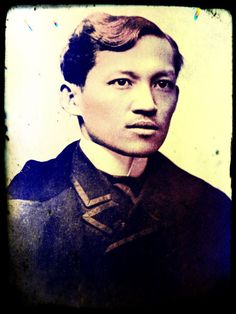The discovery of the Laguna Copperplate Inscriptions (LCI) only proved of the existence of organized political system in the pre-Hispanic Philippine soil ruled by local kings or chieftains, and a writing system of their own which believed to have evolved from Kawi, an extinct Javanese script usually in Southeast Asia during the 600-1500 A.D. This discovery did reset the known Philippine history period from the common March 17, 1521-version to an earlier April 21, 900-period, the date when the Laguna Copperplate Inscription is believed to have been made.
 |
| Laguna Copperplate Inscription |
Tagalog Translation:
Mabuhay! Taóng Siyaka
822, buwán ng Waisaka, ayon sa aghámtalà. Ang ikaapat na araw ng pagliít ng
buwán, Lunes. Sa pagkakátaóng itó, si Dayang Angkatán sampû ng kaniyáng kapatíd
na nagngangalang Buka, na mga anák ng Kagalanggalang na si Namwarán, ay
ginawaran ng isáng kasulatan ng lubós na kapatawarán mulâ sa Punong
Pangkalahatan sa Tundún sa pagkatawán ng Punong Kagawad ng Pailáh na si
Jayadewa.
Sa atas na itó, sa
pamamagitan ng Tagasulat, ang Kagalanggalang na si Namwarán ay pinatawad na sa
lahát at inalpasán sa kaniyáng utang at kaniyáng mga náhulíng kabayarán na 1 katî
at 8 suwarna sa harapán ng Kagalanggalang na Punong Kagawad ng Puliran na si Ka
Sumurán, sa kapangyarihan ng Kagalanggalang na Punong Kagawad ng Pailáh.
Dahil sa matapát na
paglilingkód ni Namwarán bilang isáng sakop ng Punò, kinilala ng Kagalanggalang
at batikáng Punong Kagawad ng Binwangan ang lahát ng nabubuhay pang kamaganak ni
Namwarán na inangkín ng Punò ng Dewatà, na kinatawán ng Punò ng Medáng.
Samakatwíd, ang mga
nabubuhay na inapó ng Kagalanggalang na si Namwarán ay pinatawad sa anumán at
lahát ng utang ng Kagalanggalang na si Namwarán sa Punò ng Dewatà. Itó, kung sakalì,
ay magpapahayag kaninumán na mulâ ngayón kung may taong magsasabing hindî pa alpás
sa utang ang Kagalanggalang...
English
Translation:
Long Live! Year of
Siyaka 822, month of Waisaka, according to astronomy. The fourth day of the waning
moon, Monday. On this occasion, Lady Angkatan, and her brother whose name is
Buka, the children of the Honourable Namwaran, were awarded a document of
complete pardon from the Commander in Chief of Tundun, represented by the Lord
Minister of Pailah, Jayadewa.
By this order, through
the scribe, the Honourable Namwaran has been forgiven of all and is released
from his debts and arrears of 1 katî and 8 suwarna before the Honourable Lord
Minister of Puliran, Ka Sumuran by the authority of the Lord Minister of
Pailah.
Because of his faithful
service as a subject of the Chief, the Honourable and widely renowned Lord
Minister of Binwangan recognized all the living relatives of Namwaran who were
claimed by the Chief of Dewata, represented by the Chief of Medang.
Yes, therefore the
living descendants of the Honourable Namwaran are forgiven, indeed, of any and
all debts of the Honourable Namwaran to the Chief of Dewata.
This, in any case, shall declare to whomever henceforth that on some future day should there be a man who claims that no release from the debt of the Honourable...
This, in any case, shall declare to whomever henceforth that on some future day should there be a man who claims that no release from the debt of the Honourable...
1. The use of calendar based on their knowledge of astronomy.
2. The use of document as legal instrument in granting pardon.
3. The existence of legal or justice system.
4. The presence of social classes and geo-political jurisdictions.
5. The use of monetary unit (used in trade and commerce).
6. Their knowledge in mathematics, arts and metallurgy.
7. The use of writing system.
The existence of Laguna Copperplate Inscriptions reveals that the early inhabitants of pre-Hispanic Philippines were civilized people. They are structured in their own social and political terms through organized polities at different levels. They adhered into the guiding principles of legal standards, such as obligations, agreements or contracts, as shown in the issuance of the declaration inscribed in the LCI.
However, in view of the aforementioned claim of the Tagean-Tallano's clan nowhere in the inscriptions it did mention any reference to the name of certain King Luisong Tagean, the purported patriarchal king of the Maharlikan Kingdom or to any of his immediate family members establishing their leaderships or ownership of the entire Philippines Islands or their ascendancy to royalty at that certain years in the Philippine history.
